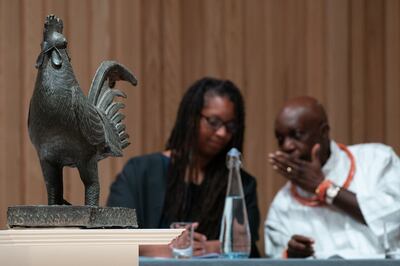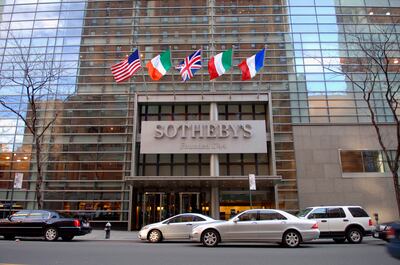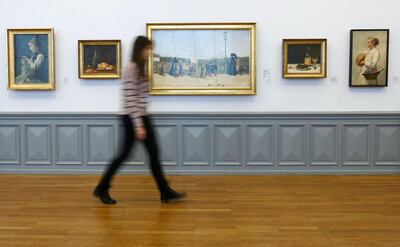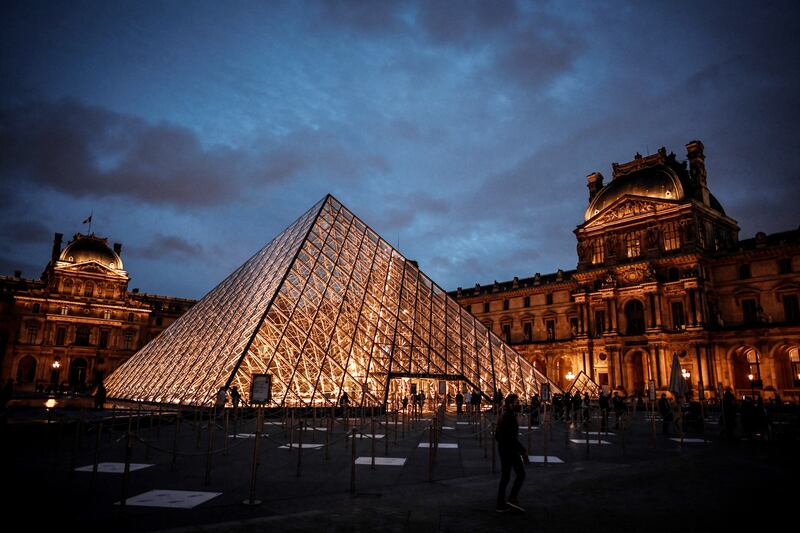The recent news that Sotheby’s is lending financial support to the Musee du Louvre in investigating the provenance of artworks in its collection brought another element of restitution into the spotlight: that of materials potentially confiscated by the Nazis from 1933 to 1945.
Under the terms of the collaboration, which began in 2021 and ends in 2023, Sotheby’s is lending financial assistance to the Louvre’s eight collections departments to investigate works that entered the museum in the years between the early 1930s and mid-1940s.
This will help the Louvre in preserving and making available research sources, such as by digitising inventories, photographs, documents and archives, and in the dissemination of knowledge through seminars and publications, says the museum.
A first of its kind
Restitution claims have increased in public visibility over the past few years, spurred on by a general sense of the ongoing wrongs of colonialism and the ethical duty of museums to address them.
Several specific commentaries have also moved the needle on public sentiment, such as British archaeologist Dan Hicks’s historical research in The Brutish Museums: The Benin Bronzes, Colonial Violence and Cultural Restitution on the violent looting of the so-called Benin Bronzes, which were taken by a British expedition from the Kingdom of Benin, in what is now Nigeria, and sold or passed around the world.
Germany has announced it will start returning all Benin bronzes in its state collections this year. Jesus College, part of the University of Cambridge, will also return its bronze statue of a rooster from the Benin loot, though the British Museum has said it will not be repatriating its Benin holdings.
This makes the collaboration between the Louvre and Sotheby’s of potentially wider interest. A first of its kind between a private auction house and a public museum, could this model be transferred to the repatriation cases of artefacts from the colonial era?
Repatriation v restitution
Fionnuala Rogers, a British art lawyer who set up the London firm Canvas Art Law, which specialises in such cultural property concerns, explains that the issues of repatriation and restitution are linked in terms of their underlying ethics.
“France has been one of the leaders in deciding to address the return of colonial pieces head-on and so it would be quite odd if it were to take a completely different approach to Nazi-looted art that might still reside in French Museums,” she says of the Sotheby’s-Louvre collaboration. “It wants to proactively look at these ethical and moral claims and to stand out as a leader there, not just where it is legally required to.”
However, she says the differences between the two fields are ultimately so large that existing procedural frameworks will not easily translate from one to another.

“There are similarities in the sense that they're both largely moral claims,” Rogers says. Both are also primarily debated in the realm of public opinion, she points out. “In most countries, you don’t have a court route open to you for colonial-era pieces, because they entered collections before a lot of the legislation [relating to the export of cultural artefacts or international treaties granting them protection from illegal export] was in play.
"The Benin Bronzes, for example, were taken in 1897, before any international treaties such as the Hague Conventions or 1970 Unesco Convention. The difference is that when you're looking at colonial artefacts, they come from a variety of countries, over a very long period of time, whereas with Nazi-era loot, you're looking at a relatively short, finite period in time. Those types of work are also generally easier to identify, and they come from private owners rather than state collections.”
Being able to pinpoint a specific Van Gogh painting, from a photograph or even receipt, owned by a particular Jewish family makes it easier to establish its provenance and launch a claim for its return from a museum collection. This is less straightforward when the artefact in question is a general type of statuary belonging to a state or even several states.
The process for contesting restitution cases in the area of potentially Nazi-confiscated artwork is also significantly more advanced. In 1998, the Washington Principles on Nazi-Confiscated Art were put in place to co-ordinate the return of artworks to their rightful heirs. As part of these accords, five nations have set up so-called “ad hoc” panels to hear claims to red-flag objects in public collections and make recommendations for solutions, on an ethical rather than a legal basis. In most jurisdictions, the legal route to making a claim is no longer open because the statute of limitations would have long lapsed in many cases.
How and why museums can step up
The Washington Principles also mandated that museums and public collections investigate works that entered their holdings after having been potentially looted by the Nazis. The Sotheby’s-Louvre partnership is a clear step in that regard.

If any of the discovered work is suspected of spoliation, then “the search for a ‘just and fair’ solution is the norm recommended by the museum's management”, says the Louvre, following the terms given in the Washington Principles. At this juncture, it is possible that the heir to the artwork in question will then sell the work, which Sotheby’s might have an increased chance of brokering.
Beyond this speculation, it seems that interest from Sotheby’s in the collaboration is simply that a more honest and transparent art market benefits all players.
Till Vere-Hodge, a lawyer in London who specialises in resolving restitution claims, often in relation to objects that were dispossessed during the Nazi era, explains that artworks suspected of having been taken by immoral means are, in effect, tainted in the market.
“The strictly legal route for restitution of Nazi-looted art is limited if not closed, but 'moral claims' have a huge impact on the court of public opinion,” he says. “And this court of public opinion means that you cannot sell [a despoiled work] at market price using legitimate channels of sale. That is why owners or possessors have a huge incentive to find a settlement, because otherwise their art is non-saleable and therefore has no commercial value.”
Here again, the frameworks between colonial and Nazi-era material diverge: the market may be less of a concern for colonial-era works, most of which will return to state collections in what is determined to be their source countries.

What’s next for repatriation?
One palpable effect of the increasing visibility of repatriation claims – and their capacity to become a reputational issue – is that new museums, such as Louvre Abu Dhabi, and more recent acquisitions to existing collections have become extremely fastidious about provenance research.
Governments and existing state collections, as Germany’s decision to return the Benin Bronzes in its state collections show, are also more likely to take on the burden of the matter themselves, conducting due diligence on their collections in a form of self-policing.
Alexander Herman, director of the Institute of Art and Law in London, noted during a recent talk – on the comparison between Second World War-related and colonial frameworks – that advisory panels are being considered by the Belgian, French and Dutch governments, similar to those established for Nazi-era artworks.
Courts, already of limited utility in the Nazi-era context, will be even less important to repatriation disputes. Ultimately, because the claimants for colonial works are states, the adjudication over the artefacts will fall to diplomacy – as has been the case for years in the dispute between the Greek and British governments over the Elgin Marbles.
In this sense, the fate of these objects – and the communities seeking their return – becomes again a matter of cold, hard realpolitik.






